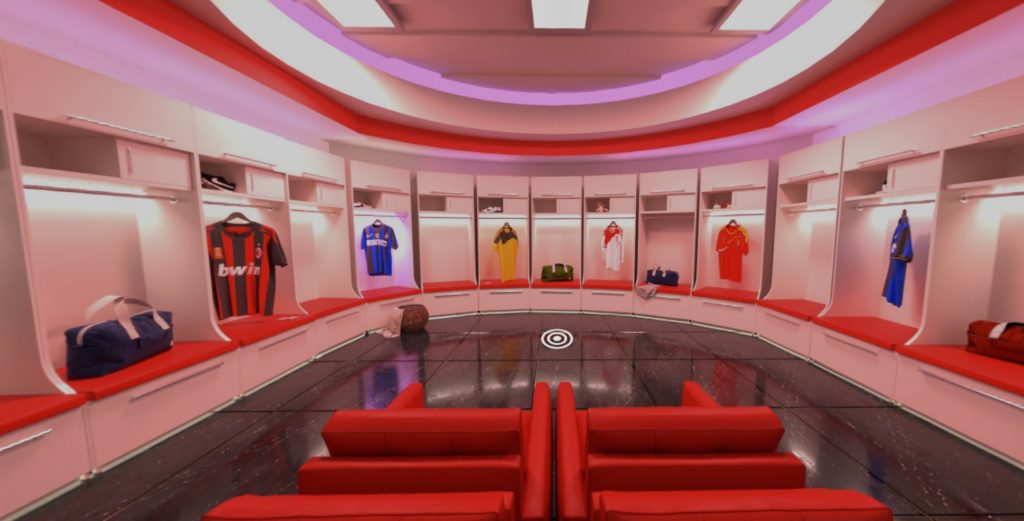How likely is it to look at the headlines today and not see mentions of the ‘metaverse’? The metaverse has become one of those all-encompassing terms for what is meant to be the next Internet.
Startups, corporations and investors alike are starting to embrace the possibilities the metaverse offers: decentralized finances, utility tokens, and profitable consumer experiences. A glimpse of what’s on the horizon is enough for companies to shift their gears in order to stay ahead of the curve. But the aspect that most people are not talking about is —adoption.
Many companies will struggle to adopt the technologies required to survive in the metaverse. Participating in the metaverse requires users to possess the latest pair of VR and AR devices, which can cost upward of $300.
However, the idea of the metaverse is not completely obsolete. Even smaller companies can take note on how to attract more customers based on creating virtual, hyper-realistic experiences. Having only a website just won’t cut it anymore. Companies that can set up seamless experiences for their consumers without requiring them to own more devices than a phone, are likely to grasp more success in this developing space.
Kahlil Ashanti is the founder of Mantis XR, a tech company that creates photorealistic 3D e-commerce experiences for sports and retail brands simply accessed through a URL or QR code. He sat down with us to share some of his insights of the metaverse as a trend, obstacles to adoption, and what brands can do to stay on top of their game in terms of marketing.

What do you think is the difference between the metaverse and what has existed for a long time, such as the virtual gaming sector? How likely do you think the world will fully adopt this type of single, unified augmented reality?
Kahlil: The difference is context. The people who are in the virtual gaming market have a very specific set of expectations. The appeal for gaming is purely experiential, and has not much to do with the debate of decentralized vs centralized authorities. Thus, our hope for a single, unified augmented reality might be overshooting it a little. History has shown that corporations will always try to own and dominate these spaces. The companies that are pushing the hardest for the metaverse, such as Meta, are coincidentally the ones that are benefiting most from its adoption.
The fact is, human behavior is one of the hardest things to change. Just because you and I believe that using certain technologies makes perfect sense, doesn’t mean it’s applicable to everyone else. The metaverse adds this extra layer of complexity, that you need extra devices often to access it. Therefore, we need to accept that changes in behavior is not going to happen as fast as we would like it to.
How has the metaverse inspired your personal career and business? How do you intend to contribute to the metaverse / or its adoption?
Kahlil: I performed magic in Japanese at Caesar’s Palace in Las Vegas for three years back in the late nineties. It was through that time I started to notice the timeless quality that made these types of experiences profitable.
The Forum Shops at Caesars Palace, in Las Vegas, when it originally opened was the most successful shopping venue per square foot in the world. Why? Because they sold the experience.
Vegas is full of visual and sensory stimulation that submerges people into a different world. When you’re immersed in this type of experience, spending comes more naturally.
And so I followed this curiosity around social commerce experiences, started coding, and built and sold my first startup in this area. From there I continued to build MantisXR. While everyone is focusing on 360 goggles, apps with closed systems, or VR headsets, I see a huge opportunity in extended reality, which is the best of both worlds and accessible from the browser. I want to use this technology to help brands create social connections by allowing their customers to shop together in 3D.
How easy is it for brands to adopt the type of technology that’s required to seamlessly integrate into the metaverse?
Kahlil: It’s not easy for brands to adopt at all, unless budget is not a concern— and even when you do have the budget, it’s still not guaranteed. The tools available for brands to get up and running with technologies don’t scale well.
For example, many of the decision-makers at legacy industries in sports don’t want more work, they want it to be as easy as possible.
MantisXR narrowed in on this opportunity by creating a way to interact with 3D immersive e-commerce experiences without the need for extra equipment or downloads. All fans need is a smartphone with a browser and they can easily access the metaverse commerce experiences through QR codes or hyperlinks. It’s all about removing the obstacles and extra steps that prevent companies and consumers from adopting this type of technology while providing ways to increase conversion, reduce returns and build trust.
In what ways can you see the metaverse facilitate a virtuous society?
Kahlil: We have to be careful about letting the metaverse dictate how society behaves, and let society be society. I always understood the value of personal connection and I don’t think anything can really replace that. Our behavior is shaped by the people around us: our parents, our siblings, our friends, and teachers.
I think it’s crucial that we don’t rely on technology to change our behavior. It’s not technology’s responsibility to give us a virtuous society— society cannot survive in the metaverse. That’s looking at it with a very limited perspective. It’s like saying ‘I want to get in shape, all I have to do is start exercising.’ But there’s more to it: there’s nutrition, sleep, stress..etc. Technology is a tool and we have to be careful of how we use it.
What are the next trends you predict in the space?
Kahlil: Something that has great potential is the utility of NFTs. There are a bunch of NFT collections out there, but I think quality will always withstand time. The successful NFT companies will provide the new generation with a way to engage with what they love. NFTs make it easier for companies to meet fans where they are. Physical tickets are one-time use, whereas holding an NFT gives you the ability to access experiences, and then resell the NFT so that others have the opportunity to experience it as well.
What are some of the marketing strategies you think existing and new brands could watch for to succeed in the metaverse?
Kahlil: Building a community and leveraging that has been the best tactic I’ve observed. I recommend The Practice by Seth Godin, it’s a brilliant little book that gives you insights into innovative and thoughtful marketing strategies that focus on making your customer the hero of the story.
There’s something I read in Techstars recently I wanted to share:
“ The 1-19-80 rule prefaces that 1% of the community is active, 19% lurks around, 80% don’t regularly engage.” The idea behind that is that I think we live in an instant gratification society where we want to hack and get as many followers as possible.
But the most successful companies are actually the ones that have stood the test of time, by building their communities by continuously being generous and adding long-term value.
According to a Shopify commerce report, digital ad spend is falling flat. The diminishing returns on ad spend mean that the cost of customer acquisition is going up. Post-pandemic everyone is on e-commerce, which means it is increasingly important for brands to market highly differentiated social commerce experiences.
Online experience and offline experience can no longer exist in a silo. The word e-commerce is no longer relevant because the line between offline and online experiences has been blurred; In the metaverse, it’ll just be called commerce.
Name the 3 toughest things about being an entrepreneur in tech.
- Being patient – I’m an impatient person by nature, but I hire developers that are smarter than me to make sure we’re staying on the front edge. I know that quality takes time.
- Loneliness – It’s not talked about enough, but nobody talks about the failures. It’s always success that’s portrayed in media, the endless lists of funding raises, “forty under forty,” or other things which create the illusion of success theatre. In reality, growth happens in the shadows of failure. Founders need to know they’re not alone in their struggles, and any legit successful entrepreneur will tell you that failure is inevitable.
- Sifting through people – Be aware of people giving directions to places they have never been. There’s no shortage of ‘advisors’ in the tech startup industry where they’ll want some of your equity in promise for connections. There are more sports tech accelerators than there are sports companies so be careful of who you trust.
